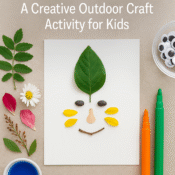
Orienteering Adventures: Designing a Course That Builds Map Reading Skills
Why Map Reading Matters in a GPS World
In today’s tech-driven lives, kids rarely get the chance to learn real-world navigation. But what happens when the battery dies, or the signal’s gone? That’s where map reading skills come in—an essential, hands-on life skill that boosts spatial awareness, problem-solving, and confidence in the great outdoors.
Orienteering combines physical movement with mental challenge, making it a perfect outdoor learning activity for families, teachers, and youth leaders.
The Framework: What Makes a Good Orienteering Course?
Before grabbing a compass and heading into the woods, a solid plan is key. Here’s what makes orienteering truly effective for building map reading skills:
1. Progressive Challenge Levels
Design checkpoints with increasing complexity—from simple line-following to terrain-based decisions.
2. Real Maps Over Cartoons
Use actual topographic or park maps instead of stylized ones. This builds transferable skills.
3. Clear Objectives for Each Checkpoint
Each location should teach a specific map skill: understanding contour lines, identifying symbols, measuring distance, etc.
4. Encourage Teamwork
Pair younger kids with older ones, or run family teams to promote communication and collaborative decision-making.
How to Design Your Orienteering Course: Step-by-Step
Step 1: Choose a Suitable Location
Pick a park, school ground, or wooded trail with varied but safe terrain. It should have clear boundaries to keep kids from straying too far.
Step 2: Print or Create a Base Map
You can download open-source topographic maps or use free platforms like OpenStreetMap. Highlight major features: paths, water, trees, buildings.
Step 3: Mark Checkpoints With Purpose
Design 5–10 checkpoints. Each one should target a specific skill:
- Point A: Interpret basic map symbols
- Point B: Measure real-world distance
- Point C: Use a compass to orient map
- Point D: Navigate using contour lines
- Point E: Recalculate when lost
Step 4: Add Instructions and Hints
Include small clue cards at each checkpoint. Example:
“Look for a tall pine near the rock cluster. Which direction is north from here?”
Step 5: Run a Trial with Adjustments
Test your course with a small group first. Gather feedback on clarity, fun factor, and challenge level.
Bonus: Gamify the Experience
Turn the course into a mini competition:
- Time each team and display results
- Add ‘mystery items’ at checkpoints to collect
- Offer badges or printable certificates for completing skills
Final Thoughts: A Skill That Sticks
Orienteering teaches much more than how to use a map. It fosters resilience, strategic thinking, and a love of exploration. Plus, it gets kids off screens and into fresh air. Whether for a birthday party, summer camp, or classroom lesson—this activity builds real-world confidence that sticks.




